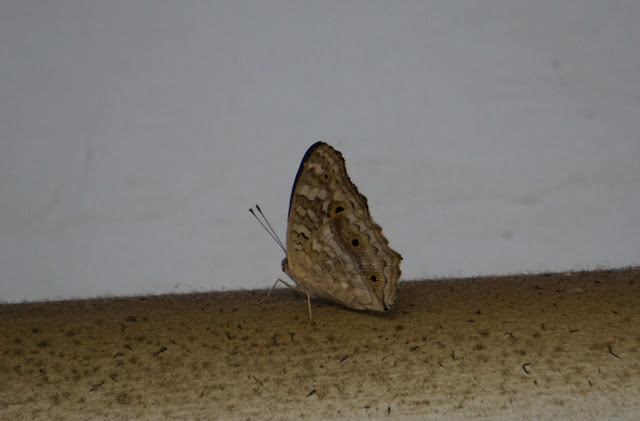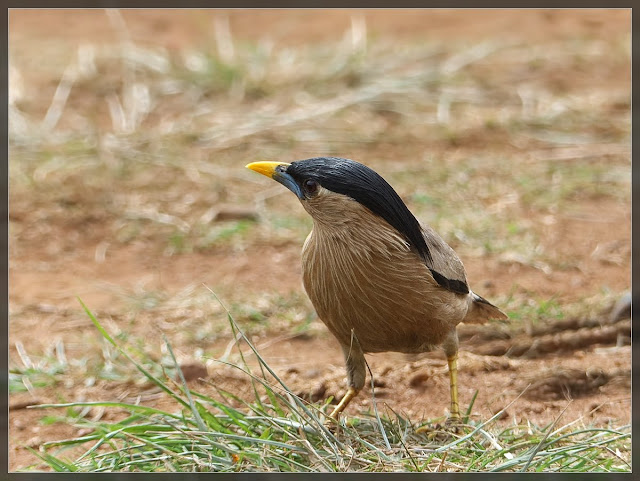Looking forward to Dandeli.
A Classic Story of Hornbill Conservation | JLR Explore
The woods of Dandeli are home to four different types of hornbills: Common Grey Hornbill (Tockus birostris), Malabar Grey Hornbill (Tockus griseus), Malabar Pied Hornbill (Anthracoceros coronatus) and Great Indian Hornbill (Buceros bicornis). Of all the four, Malabar Pied Hornbill is found in good numbers in the vicinity of Dandeli. However, the study done by Reddy and Basalingappa (1990) revealed that this particular population will dwindle if the habitat is not maintained and conserved. According to Kemp (1973), food supply is one of the main proximate factors to trigger breeding in hornbills. After making detailed studies, Kemp (1976) emphasised the importance of food, particularly during the breeding period of hornbills, and came to the conclusion that food supply determines the clutch size and the duration and timing of egg-laying. The reports of Stonor (1937), Moreau and Moreau (1941), Kilham (1956) in Bycanistes hornbills regarding inadequate food supply are alarming, as it affects the breeding so much that females come out of their nests without laying eggs.
Since the planting of tree species supporting Malabar Pied Hornbills is not a priority of the Forest Department, coupled with hunting by local forest dwelling communities, it is believed that over a period of time, we may lose this species from the region. Hence, there was a need for greater emphasis on the protection of the habitat and also creation of much-needed awareness amongst locals as well as visitors.
A Malabar Pied Hornbill
In June 2006, I came to Dandeli as Deputy Conservator of Forests, Dandeli Wildlife Division, and was staying in a forest guest-house located on the banks of River Kali. The next morning, I was awoken by a call; I rushed out, only to see a very beautiful Malabar Pied Hornbill. There were many of them sitting on a Melia composite tree. It was truly love at first sight. I started reading about this bird and observing its behaviour very closely. This led me to the PhD thesis of Dr Sanjeev Reddy and interestingly, Sneha came to study this bird for her M. Phil during the same period. As my interest and knowledge about this bird grew, I also came across information about its hunting by local communities, with a belief that the meat of the bird has medicinal value and can cure stomach ailments, which set me thinking on how to sensitise people to the significance of hornbills for the conservation of the forests of the Western Ghats.
One fine morning, a group of around 50 higher-primary school children from Tangal School of Jamakhandi Taluka, Bijapur District, came to Kulgi Nature Camp at Dandeli-Anshi Tiger Reserve, for a week’s camp. I was asked to address the children on the inaugural day of their camp. While addressing the children, I took the opportunity to narrate the life-cycle of hornbills:
“Once hornbills decide to make a family, the male and female court each other for a while, during February- April, and once the time for laying eggs comes, both search for a nest hole deep in the jungle, together. Then, the female enters the nest hole and seals the opening, leaving a slit just enough for its beak to receive food from the male. As the space inside the nest hole is quite small, the female bird sheds all its feathers, practically becoming naked, and makes a cushion with those feathers for the young ones. She remains inside for 38 to 40 days. During this time, the male goes in search of food for himself as well as for the female and chicks. Being summer, the availability of food is quite scarce and hence, he has to travel long distances in search of food. Furthermore, the forests of Dandeli being tropical deciduous, trees would have shed their leaves, making the bird quite visible. As the forest dwelling communities do not have any agricultural activities during this period, they spend most of their time idling. An idle mind being the devil’s workshop, the hornbill becomes quite vulnerable, and is killed easily by these people. Once the male bird is killed, its entire family gets buried in the nest hole. Not only this, this nest hole is never used by any other hornbill. This is the primary reason for dwindling hornbill populations. We need to educate people to conserve hornbills.”

After this inaugural address, I left the children to themselves. I didn’t realise the impact of my address until I was called three days later, to watch the children enact a play based on a story written by them, about hornbills. After I had left the camp, one of the teachers who had accompanied the students asked them to develop a story based on my address, to conserve hornbills. The children had got together for an entire night and day, coming up with a very comical yet touching story.
“A woman emerges from a hut, asking her husband sitting outside and chewing tobacco to go to the forest and fetch some firewood. The husband refuses to oblige, saying it is her job to get the firewood. The wife says that the forest guard has warned her of dire consequences if she ventures into the forest to collect firewood, and refuses to cook food in case he does not get it; left with no choice, the husband ventures out. While collecting firewood, he hears the flight of a hornbill. He follows the sound only to find the bird sitting on a tree just above his head. He instantly shoots the bird with a catapult, killing it. With a sense of pride he enters the house and taunts his wife that she refused to go to the forest, while he brought not just the firewood, but also some meat. This entire episode is being observed by an elephant.”
“The elephant tells the couple that they do not know the mistake he has committed by killing the bird. The elephant then takes the couple to a tree and calls out to the female hornbill sitting inside the nest hole, asking what she was doing. The female replies that she is waiting for her husband, who has gone to fetch food for her and the kids. The elephant then tells her that it was already too late for lunch, and asks if she was sure that her husband was going to get the food for their family. She replies confidently that her husband is quite loyal to her, and will surely bring the food. The elephant asks again why she thought the male was so late today. The female innocently replies that being summer, getting ripe fruits is very difficult, so he has to fly long distances in search of the food.”

“This conversation between the elephant and the female hornbill is being heard by the couple. By now, they start realising that the dead bird in his hands is none other than the husband of the female sitting inside the nest hole. They hear the elephant tell the female hornbill that her husband wasn’t going to return. She denies the elephant’s statement and insists that he will surely come, though it may take some time. The elephant then reveals that her husband has been killed by a man, at which, the female hornbill starts crying inconsolably. The man then tries to reassure the hornbill that she need not cry, as he will open the nest and get her out. The female hornbill replies that she has shed all her feathers and cannot fly; there is no use taking her out of the nest hole. The man then tells her that he can fetch food for her and her kids. The female replies that he won’t be able to get the food she feeds upon, and therefore, it is an end of her life as well as the life of the newborn babies. The female hornbill then says that the man has killed not just her husband but the entire family.”
The children enacted this story so well, that many of us were just spell-bound. It was truly beautiful and heartening, as they had designed masks of the man, the woman, and the elephant, besides models of the tree and the hornbill. They played the roles to the best of their abilities, in the serene settings of the nature camp.

I gave this story to a group of volunteers working with me in the Dandeli-Anshi Tiger Reserve, and asked them convert the same into a street play, using local dialect. The troupe has performed not less than 100 shows in and around the tiger reserve so far. On one occasion, I witnessed one of the shows at a remote village, Kegdal. Many forest dwellers, especially Gowlis, were witnessing the play with rapt attention. I could see tears in some people’s eyes when the conversation between the female hornbill and the elephant was taking place. At the end of the play, a 60 year old man walked towards the play and held the hand of a lead artist. What he said that day was truly touching – with tears in his eyes, he admitted that he had killed hornbills, and that he never knew about the life of the bird and had never realised his mistake. He promised us that he would never kill hornbills hereafter, and also that he would never allow anybody else to kill the bird.

Today, all of Dandeli is aware of the story of hornbills, and people from across Karnataka as well as the neighbouring states of Maharashtra, Tamil Nadu, Kerala, and Andhra Pradesh come to Dandeli to see this bird.
One of the editors of a leading Kannada daily, upon hearing the story, carried an article in the paper and then influenced the Chief Minister of Karnataka upon my request, to declare the area adjoining the Dandeli–Anshi Tiger Reserve as a Hornbill Conservation Reserve, under section 36A of the Wildlife (Protection) Act 1972. The area comprises of the banks of Kali River from IPM (erstwhile) to the bridge on Dandeli–Kulgi road, the Riverview Bungalow, Govt. Timber Depot, Dandakaranya Park and the areas around Ganeshgudi.
A Great Indian Hornbill
The Forest Department also developed a Hornbill Trail to educate visitors and to narrate the story of hornbills. Almost all the naturalists and guides of the region are trained in this aspect. On 31st December 2011, almost five years after I had left Dandeli, I boarded a bus in Hubli to go to Hyderabad. Two middle-aged men just behind my seat were discussing hornbills and the Hornbill Trail. One of them said that he could not get a good photograph of the bird and was told by the locals that he should return in February, when Ficus mysorensis trees are fruiting, for getting a good image of the bird. This gave me tremendous satisfaction: what we started in a humble way in 2006 came back to me after five years. The circle was complete.
Today, Dandeli talks about hornbills with a lot of pride, and recently celebrated a Hornbill Festival in which people from all walks of life participated. On many occasions, locals and volunteers called me to inform that many hornbills were being spotted that year. This is a classic case of protecting an endangered species of a bird and its habitat.
Manojkumar
Manojkumar is a post-graduate in Forest Genetics and did his PG Diploma in Wildlife Management from WII, Deharadun. He belongs to 1997 batch of Indian Forest Service. His work has taken him all across Karnataka. He served as Executive Director of Sri Chamarajendra Zoological Gardens, Mysore, and as Director of Dandeli-Anshi Tiger Reserve. His area of interest is conservation education and he has been involved in creating awareness amongst school children, teachers, bureaucrats, politicians and media persons.
Currently, he is serving as Chief Conservator of Forests, Kodagu Circle, Madikeri.






















































